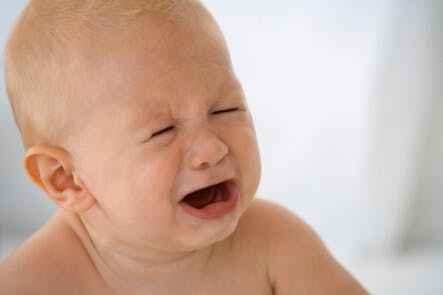Fast Facts about Ear Infections
Since ear infections are the most common diagnosis in pediatrics, it is worthwhile for a parent to learn to become a detective. Dr. Greene explores.

Since ear infections are the most common diagnosis in pediatrics, it is worthwhile for a parent to learn to become a Sherlock Holmes — able to notice the clues and suspect an ear infection before it becomes advanced. Here are some important things every parent should know about ear infections:
- Throughout the United States, and in the United Kingdom, ear infections are markedly more common in December through March. Their incidence is particularly low from July to September.
- Shockingly, careful studies (e.g. Pediatrics December 1992; 90:1006) have found that 0% of children with ear pulling as the primary sign had ear infections. Even in conjunction with other important clues, such as fever, only 15% of those brought in for ear pulling actually had ear infections. Most commonly, children pull their ears from itching (caused by soap or shampoo in the canal, or by a healing infection), teething, exploration, comfort, or habit.
- Most ear infections hurt. The pain builds as the pressure in the ear builds, from a dull ache to a sharp stabbing pain. The pressure is relieved intermittently, so the pain comes in waves. The pain is worse at night. Most ear infections occur in children under age two. The best clue is evidence of pain, such as crying or screaming (usually less than half an hour), fussiness or irritability (worse when lying down), or suddenly increased difficulty sleeping, especially at night. They often have no pain the following morning.
- In an ear infection, fluid fills the middle ear. Older children often mention a feeling of fullness or decreased hearing in the affected ear. This is difficult to detect in an infant, but you might notice shaking of the head.
- Only one third to one half of children with an ear infection will develop a fever. Temperatures over 104 occur in fewer than 5% of ear infections. Fevers are more common in infants and toddlers than in older children. By itself, a fever is not a powerful clue; but in conjunction with the clues outlined above, it is quite incriminating indeed (the combination of fever and pain is most often an ear infection in infants and toddlers).
- Don’t let other symptoms, such as loose stools or vomiting, throw you off the trail. Ear infections are sometimes accompanied by systemic symptoms.
- Something must plug the Eustachian tube for an ear infection to occur. An upper respiratory infection is often the culprit. The accomplice might also be a change in elevation, allergies, an irritant (such as cigarette smoke), reflux, or drinking a bottle while lying on the back.
- Even with the above clues, only objective evidence can clinch the diagnosis. There is now a wonderful device that uses sonar-like technology to detect fluid in the ear. The device, called an EarChek, is inexpensive, accurate, and simple to use at home. If there is no fluid, there is no ear infection. If fluid is present, only direct visualization of the eardrum by a skilled observer can determine if this is an acute ear infection.
- Remember, it is possible to have an ear infection in an infant with no clues. Here, a positive reading on the EarChek may be the first sign. Also, regular well-child pediatric visits in the first two years screen for these silent episodes.
Get Dr. Greene's Wellness Recommendations


